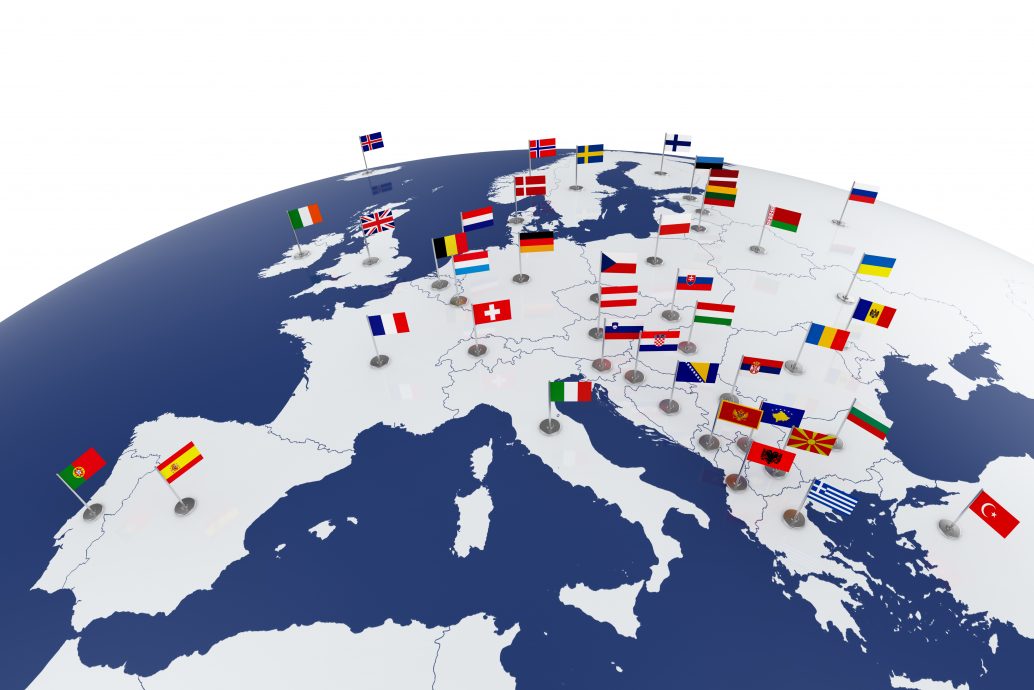The New Nationalism
Something strange has been happening all year in Western politics. Both in the United States and Europe, events dismissed as unthinkable have occurred again and again. In June, Britons voted to leave the European Union. In November, Americans elected Donald Trump to be President. In opinion polls throughout 2016, Euroskeptic parties like Lega Nord and the Five Star Movement in Italy and the National Front in France, once derided as fringe movements, have shown continuing appeal. In fact, in Italy, Lega Nord and the Five Star Movement just combined to defeat a constitutional referendum championed by Prime Minister Matteo Renzi, leading Renzi to resign.
Local factors explain much, of course. In the United States, the choice of Trump may reflect less a political realignment than an uninspiring candidate on the other side, as well as a pent-up frustration with political correctness and disappointment with the Obama administration. And the long-term consequences of the elections of 2016 may turn out to be less than first appear. The 2012 election was supposed to inaugurate a new Democratic majority in American politics. It didn’t work out that way.
Still, taken together, the political events of 2016 reflect an important common theme: the resurgence of nationalism across the West. Although other factors are also involved and nationalism’s revival has not been complete—in Austria this past weekend, mainstream parties worked together to defeat decisively a nationalist candidate for president—throughout this year, nationalist resistance to global liberalism turned out to be the most influential force in Western politics.
To be sure, traditional conservatism played a role in these developments—but only an indirect one. Although the Right, broadly defined, achieved victories in the United States and Europe, what we think of as “movement conservatism” did not. In Britain, the leaders of the Conservatives opposed Brexit; in America, many conservatives opposed Trump. In France, the Republican Party has worked hard to distance itself from the National Front, which it views as an embarrassment. In Italy, the Five Star Movement declares itself non-aligned and draws votes from both the Left and the Right.
Nor did Christian conservatism triumph in 2016. True, the majority of British Christians wanted their country out of the European Union and the majority of American Christians voted for Trump (the members of some denominations by wide margins). But both the Brexit campaign and the American election downplayed religious themes. Trump did not make Christian values a centerpiece of his agenda. Many Christians who supported him did so from a fear of what a Hillary Clinton administration would mean for their religious freedom rather than a belief that Trump shared their values. In France, the National Front’s Marine Le Pen strongly supports secularism. For an express appeal to Catholic values, one must turn instead to the Republican Party’s candidate, François Fillon.
In short, although traditional conservatism has been on the winning side in recent political contests, it has been a junior partner in a larger project: the revival of nationalism. Nationalism is a complicated phenomenon that takes different forms. A good working definition is the following: a political program that unites a people with a common ancestry or culture together with a sovereign state. Nationalism rejects attempts to subordinate the state to outside governance. Often, it seeks to protect local traditions from being diluted by an aggressive global culture. In its present iteration, it sets the nation-state against supranational, liberal regimes like the EU or NAFTA, and local customs and traditions, including religious traditions, against alien, outside trends.
Nationalism can be a malign force or a beneficial one. Especially when tied to ethnic claims, it has led to great horrors. On the other hand, it had a major role in resisting, and ultimately defeating, fascism and communism in the 20th century. And a cultural nationalism such as the United States has had for much of its history, which welcomes immigrants from across the globe provided they assimilate to local traditions, can do much to promote social peace and tolerance.
One can easily perceive nationalism’s role in the politics of 2016. Repeatedly, the side advocating a recovery of sovereignty from supranational bodies and a limit on immigration prevailed. In the Brexit campaign, the “Leave” supporters argued that Britain must take back control from EU bureaucrats and assert authority over its borders. Here, Trump famously called for withdrawal from the proposed Trans-Pacific Partnership treaty and for renegotiation of other free-trade agreements, including NAFTA; for a wall to keep out Mexican immigrants; and for a temporary ban on Muslims entering the country.
In France, the National Front’s Marine Le Pen has proudly declared that “the time of the nation state is back” and calls for restrictions on immigration and an end to multiculturalism. She maintains that the EU should be reconceived as a loose collection of sovereign states and that France should withdraw from the common currency. The ideology of Italy’s Euroskeptics is more fluid; nationalism is weaker in Italy, too. But important elements within Lega Nord and the Five Star Movement express skepticism about the EU and seek to withdraw from the euro, and also disfavor allowing large numbers of immigrants into the country.
The resurgence of nationalism upsets the conventional wisdom, which for some time has predicted the eclipse of the nation-state and the triumph of global, free market liberalism. Even Francis Fukuyama, who originated the idea of “the End of History” in 1989, has begun to reconsider. (Access to his article in the Financial Times is best from this link.) Why was the conventional wisdom wrong? Many observers argue that the financial rewards of global liberalism have been poorly distributed, with benefits going to a small number of elites within each country. Global liberalism may look great to cosmopolitans in New York and Los Angeles, who enjoy cheaper goods and services and higher returns on their investments, but to many in Middle America, who have lost well-paying factory jobs, and whose communities have been decimated by unemployment and other social ills, the advantages are harder to discern.
The lagging fortunes of what used to be called the working class are only part of the story, though, and not the most important part. As Fukuyama acknowledges, many well-educated Americans with reasonable professional prospects, who could expect to benefit from global liberalism, also supported Trump. For these Americans, too, the new world order of multiculturalism and ever-freer trade seemed lacking.
Does that mean these Americans reject liberalism itself? Maybe. Political scientist Yashca Mounk points to some worrying trends. But not necessarily—they may just want a liberalism tied to a coherent national community. Liberalism is not simply an abstract set of propositions; it is a tradition embedded in a particular political culture. Ultimately, it depends on a shared identity beyond markets and human rights, on a cultural and social unity that transcends cheaper prices and due process of law. A global liberalism divorced from local communities is a pale substitute for the deeper sources of belonging to which people naturally turn when they face a crisis. That, more than anything else, is the key political lesson of 2016.


